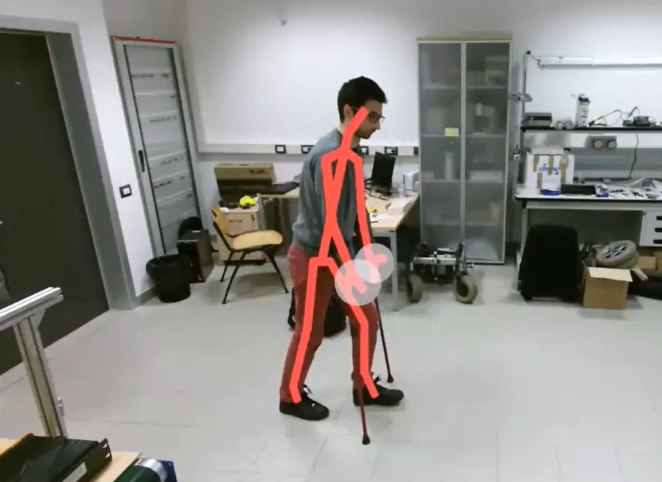The improvements in 3D technology that took place in the last 5 years led to the creation of innovative solutions in the most various and different application fields.
Last activity of the MIRo Lab was focused on the utilization of such technology for health care and well-being applications, in particular for the diseases and pathologies related to mobility impairment.
The exoskeleton represents a very promising technology for those persons who suffer such state, it could potentially improve their lifestyle and way of moving. However the technology is not intuitive and quite scary at the first contact. Commonly the user must attend a long training phase, always followed by medics and and technicians that help him to fully understand how the exoskeleton works. Such strategy is slow, expensive and in most of the cases not efficient nor effective. It is quite difficult to explain and to show how to properly use an exoscleleton unless beeing the same user: it is a matter of self consciusness, motion perception, balance etc.
A possible better solution could be represented by an innovative training structure, aimed at providing a dynamic feedback directly to the user while performing specific trainings, allowing him to see himself and to understand where or what he is performing correctly or not. With modern virtual reality tools and 3D technology it will be possible to create virtual/mixed/augmented reality optimized for such purposes, decreasing in this way the number of supervising persons while increasing the effectiveness of the training
Currently MIRo is considering the development of a measuring system able to track the posture and motion of the user wearing an exoskeleton, first step for the creation of an avatar of the user and the associated virtual reality.
Possible issue for such application are the crutches, necessary for the use of the exoskeleton. MIRo performed some preliminary tests in order to verify the behaviour of the skeletonization algorithm with such operative condition.
Here a video example showing a the correct identification of the upper limbs using a the crutches:

